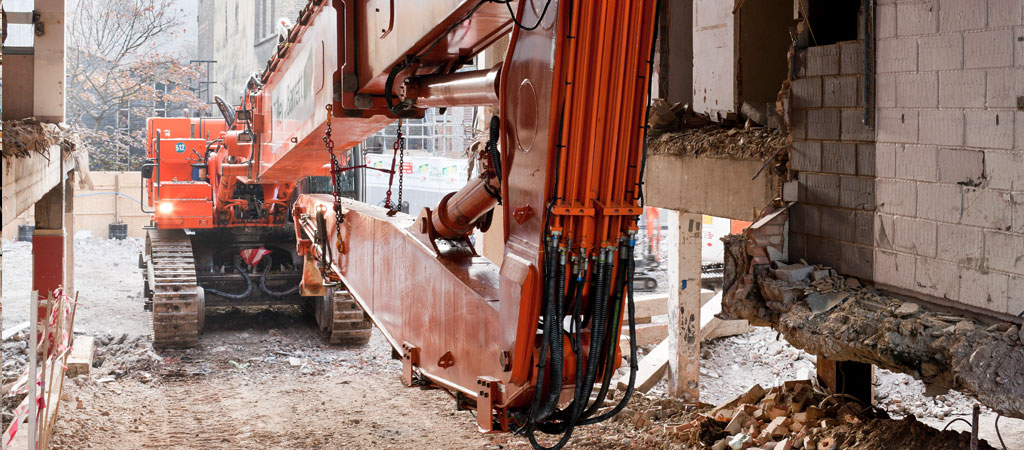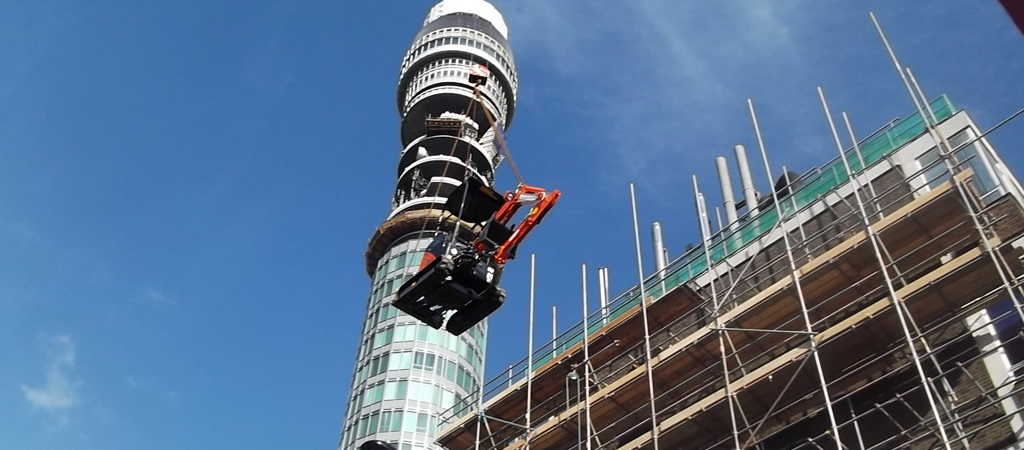As part of the wider ‘London Inner City Project', Tilley and Barrett was appointed to demolish an eight storey building on Howland Street, central London, to make way for student accommodation for up to 200 people.
Date of Completion: March 2012

Situated beside the landmark of the BT Tower, and at the junction of three main roads in the heart of Fitzrovia, the building was also partly attached and cantilevered to a grade 2 listed building, known to be one of the oldest workhouses in London.
Tilley and Barrett was selected to provide a wide range of services to compliment the demolition, these included, hoarding erection, temporary electrics and plumbing, soft strip, super high reach demolition, temporary works, scaffolding, saw cutting and stitch drilling, breaking out basement and slab and recycle all materials on site and asbestos survey, asbestos removal. However, when the project started, our in-house surveyors discovered an additional £¾m worth of asbestos. To mitigate a 14-week delay, our team put in place an accelerated programme.

The Demolition
The east section of the building was demolished on a floor by floor method, utilising a combination of mini excavators, Brokk robotic demolition machines & skid steer loaders, all supplied by our in-house plant yard.
The entire 8 storey envelope of the building was completely shrouded in scaffolding, including monoflex sheeting. We then installed vibration and movement sensors on surrounding buildings to detect any movement and or cracks. Automated dust and noise monitoring were installed to provide real time alerts to management in the event the trigger levels were exceeded.
Temporary Works
Our in-house experts designed all the temporary works, which were then fabricated and installed.
These comprised of a revolutionary solution, including the installation of 40 tonnes of temporary works to hold the building up, whilst creating a 30m2 hole/tunnel through the ground and basement of the building to allow access for a 130tonne super high reach through to the rear compound.
We used diamond saw cutting and stitch drilling around the perimeter of the site to remove the basement slab from the boundary walls which were retaining the surrounding roads/pavements. Trench props and temporary steel props were installed to support the retaining wall while it was being excavated and filled with concrete. A trench was then dug around this perimeter and backfilled with foam concrete and certified 6F2 material to allow the new piles, constructed on the site boundary, to retain the surrounding roads/pavements.
Innovative Machinery & removing recycling
A huge 65 tonne machine was used to break out the basement slab and stock pile all hard breakout material on site. Two C10 crushers and a C12 crusher was brought to site under permit to crush 18,000 tonnes of the hard breakout material.
On completion of the demolition and basement works, all material was recycled on-site to a 6F2 specification and a 7-metre-thick piling mat was constructed over the entire site. We designed and manufactured a viewing platform for the crusher drivers to prevent any risk of injury and eliminate body vibration from standing on the crusher. A revolutionary dust suppression system unit, to control and eliminate dust particles before they spread, was designed and used throughout the successful project. These innovations earned Tilley and Barrett awards from both the client and the NFDC (National Federation of Demolition Contractors).


